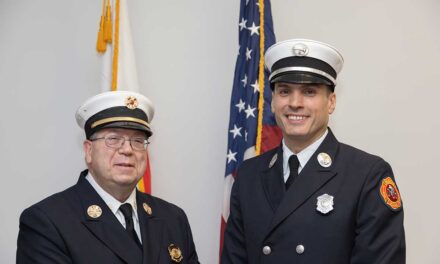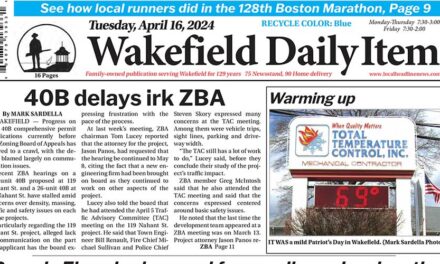Published in the July 11, 2016 edition.
By MARK SARDELLA
WAKEFIELD — A new standard for teacher evaluation developed right here in Wakefield is set to become a state-wide model and is even beginning to garner national attention.
Based on some progressive and innovative work that was developed in the Wakefield Public Schools, the Massachusetts Department of Education recently asked Wakefield School Superintendent Dr. Kim Smith to represent Massachusetts in Washington, D.C. at a cross-state collaborative conference on educator evaluation.
The genesis of the new standard, known as “Standard 5,” dates back several years.
Smith explained that around 2011, the state came out with its “Model System for Teacher Evaluation,” consisting of four standards for evaluating teacher performance. She said that school districts were given some flexibility to either adopt the state model or adapt it, as long as they stayed within the state regulations.
Smith, who has been working in the area of teacher evaluations since her days as principal of Wakefield Memorial High School, led the district’s Teacher Evaluation Steering Committee in implementing the standards in Wakefield. In addition to Smith, the Steering Committee included Wakefield teachers and administrators Tiffany DeBerardinis, Jill Charie, Jen Gallant, Rick McKenna, Stacy McGrath, Will Karvouniaris, Anne Zernicke, TJ Liberti, Deb Collura, Doug Lyons, Bev Elcewicz, Erin Roy and Andrew Tetrault.
In the course of adapting and implementing the state standards, Smith got the DOE’s OK for the Wakefield steering committee to work toward developing a fifth standard that was based on feedback from local educators.
“We decided to explore the creation of a Standard 5,” Smith explained, “one that would be part of the 5-step evaluation cycle and interact with the other four standards.”
Standard 5 looks beyond test scores to include qualitative measures, which are assessed by looking at six key indicators.
“Using qualitative measures, we can value those factors that test scores cannot show,” Smith explained, “how teachers, for example, create an environment where students feel safe to ask questions and take risks – or how they develop students’ resilience, confidence, creativity and curiosity.”
The Steering Committee initially developed five indicators for Standard 5, each with a fully articulated rubric broken down into elements, performance descriptors and suggested evidence.
A sixth indicator was later added to include social and emotional skills.
The six indicators in Standard 5 are:
• 5A. Students exhibit/share performances and make their work public.
• 5B. Students use dialogue/discourse to demonstrate understanding.
• 5C. Students assess their progress through individual and collaborative inquiry.
• 5D. Students demonstrate learning through performance on growth measures.
• 5E. Students demonstrate academic behaviors.
• 5F. Students demonstrate social and emotional skills.
“Standard 5 is a distinctly different standard than standards 1-4,” Smith Said. “Where Standards 1-4 are about what teachers do, Standard 5 is a way for teachers to view their practice through the lens of student performance and to examine ways that their instructional practice impacts student growth.”
Smith felt so strongly about what the Wakefield team had developed that last December she asked if they could present it to the DOE.
“They were really impressed with the quality of the product and the innovation and creativity involved,” Smith said. The DOE asked Smith to write an article about Standard 5 for its statewide newsletter, Educator Spotlight.
After the article came out, Smith got a call saying that Massachusetts Commissioner of Education Mitchell Chester wanted to hear more about Standard 5. Smith was asked to present before the state Board of Education last May. A short time later, the DOE asked her to go to Washington, D.C. to present at a multi-state Collaborative for Continuous Improvement of Educator Effectiveness. Smith’s expenses were paid through a grant from the Center on Great Teachers and Leaders.
The two-day conference at the American Institutes for Research included representatives from six states considered advanced in the area of teacher evaluation, including Massachusetts, Colorado, Tennessee, Arizona, Louisiana and Delaware.
“The DOE asked us to present because they thought people in other states would be interested in what we are doing in Wakefield,” Smith said. She noted that she was asked a lot of questions about what Wakefield is doing and it gave her an opportunity to talk about Wakefield’s focus on quality teaching and using measures of student learning and growth to inform teacher practice.
She said that while in Washington she heard a lot of educators talking about going back to their own states and embracing the work developed in Wakefield.
“It speaks to what the Wakefield Public Schools are doing and how much we are out in the forefront of what’s happening in education,” Smith said. “I’m just super proud of the Wakefield Public Schools.”




